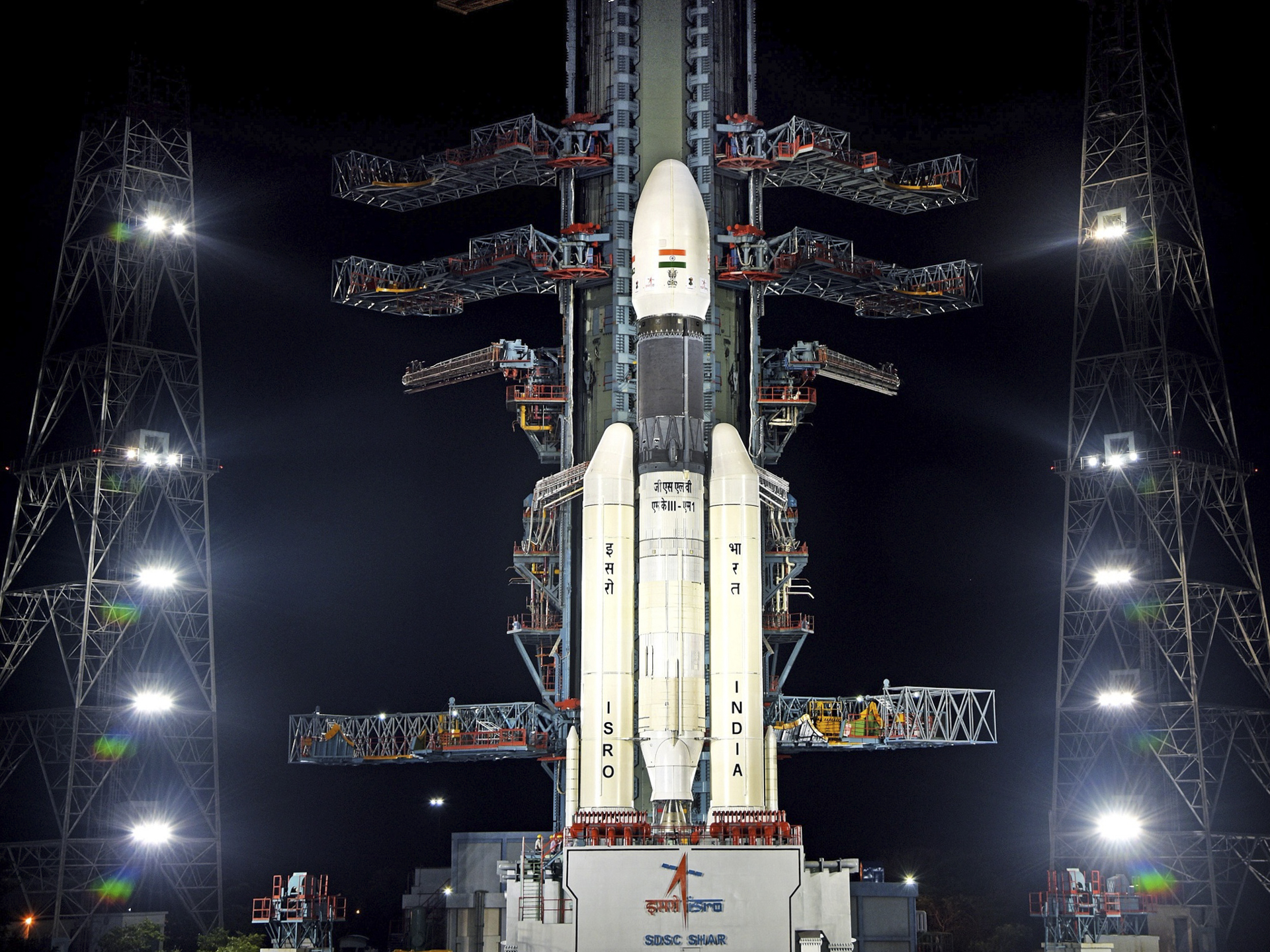
It was sad times for the Indian space program on Friday when communications with the Chandrayaan-2 lunar lander went down in the final minutes before its planned landing on the moon.
But all is not lost. Today, the Indian Space Research Organization (ISRO) announced it has located the Vikram module on the surface of the moon and is trying to re-establish communications. Inside the lander is a rover called Pragyan which was intended to analyze lunar soil and search for water, as well as measuring moonquakes. Currently, it’s not clear if either the lander or the rover is intact, after suffering what was described as a “hard landing.”
“We have found the location of Lander Vikram on [the] lunar surface and [the] orbiter has clicked a thermal image of the lander,” K. Sivan, director of ISRO, said to Asian News International. “We are trying to establish contact with the Vikram lander.”
It is unlikely that the lander survived its landing on the moon totally intact, although there is a possibility that communications could be established. In either case, locating the site of the lander impact will be useful for determining what exactly happened in the last minutes before landing. This information should help inform future missions for the ISRO.
India’s prime minister, Narendra Modi, addressed the issues with the landing and said he was proud that the country had come so close to achieving its aim of landing on the moon. “The best is yet to come in our space program,” Modi said. “India is with you.”
The mission is not a wash, however. The Chandrayaan-2 spacecraft is still in lunar orbit, and the ISRO believes it could last longer than its originally planned one year mission.
“The Orbiter has already been placed in its intended orbit around the moon and shall enrich our understanding of the moon’s evolution and mapping of the minerals and water molecules in the Polar Regions, using its eight state-of-the-art scientific instruments,” the ISRO said in a statement. “The Orbiter camera is the highest resolution camera (0.3m) in any lunar mission so far and shall provide high-resolution images which will be immensely useful to the global scientific community. The precise launch and mission management has ensured a long life of almost 7 years instead of the planned one year.”



